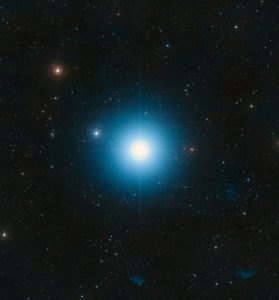
Science News reports on a recently published study regarding the hot, rocky exoplanets outside our solar system, and how they might not have always looked the same as we’re seeing them now.
According to the study, rather than being formed as rocky planets all on their own, this new theory suggests that these planets were at one point similar in structure to our own Neptune. At some point in their history, though, their gaseous layer was burned or blown away by the planet’s star, leaving only a rocky core solidified by the planet’s own gravity, any kind of atmosphere now being completely gone.
This new research is important in that it allows us to better speculate as to how many planets could potentially be habitable beyond our own solar system. Previously, the numerous instances of planets sized similarly to Earth implied that our own planet’s existence isn’t as rare as we thought. However, this theory could potentially poke holes in that assumption, with Earth-like planets being far more rare than initially thought.
If the theory holds true, it would mean that most or all of the planets similar in size to our own did not actually start out as hot, rocky, and uninhabitable as we thought, having had their gas layers or atmospheres destroyed long ago to leave them in their current state.
Currently, Earth-like planets are categorized as either super-Earths (1 to 1.5 times Earth’s size) or mini-Neptunes (2.5 to 4 times Earth’s size). The new research suggests that these planets may, in fact, have been one in the same at one point, with the super-Earths simply losing their atmospheres due to stellar winds and other outside effects.
One major piece of evidence for this theory involves the size of the planets, as well. With the previous theory of how planets were formed in a solar system, it held that large, gaseous planets would almost always be bigger and farther out from a star than small, rocky planets, with less material available to form the latter of the two sets of planets. These new discoveries seem to disprove this as a rule, however, with small, gaseous mini-Neptunes further out from a star with larger rocky super-Earths closer to it.
Super-Earths, despite the majority of them being too close to a star to sustain life as we know it, are typically counted among the number of known planets with the potential to sustain life in the universe. Professor Vincent Van Eylen of Leiden University and his team hope to challenge this assumption with their research, urging caution with assuming any rocky planet outside our own solar system could sustain life.





